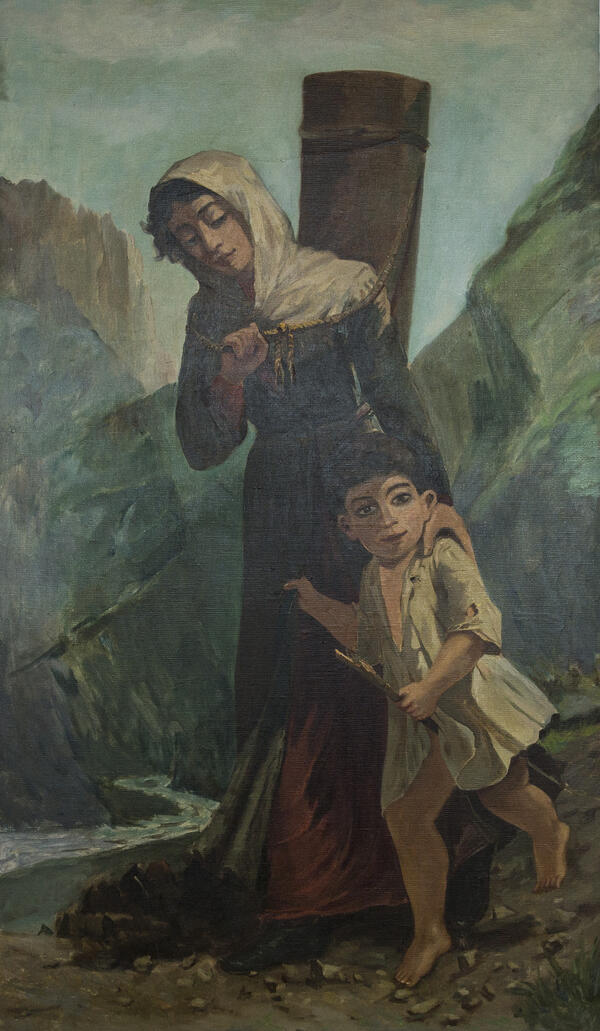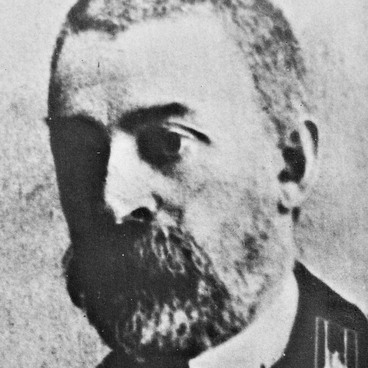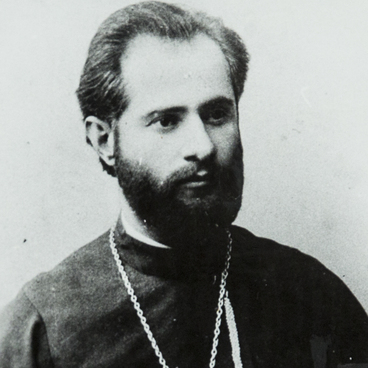Kosta Khetagurov was first modern Ossetian artist to be educated at Russia’s most prestigious educational institution, the Imperial Academy of Arts. It was his work that filled the gap between medieval art in Alanya and late 19th century art, and raised Ossetian artwork to the same level as Russian and European art.
In the painting “For Water”, the artist depicted himself as a child, along his mother, Maria Gavrilovna. However, he made this scene up. In fact, Kosta Levanovich’s mother died shortly after childbirth, and he did not remember anything about her. And Khetagurov’s step-mother, as he himself admitted, “She did not love me. In my early childhood, I would run away from her to various relatives.” In this painting, the artist embodied his longing for a mother’s affection.
However, the woman on the canvas represents not only Khetagurov’s mother, but also the collective image of the young mountain laborers. The tense figure of the mother, who must carefully make her way with the bulky container along a narrow path while carefully monitoring her son, contrasts with the child, who is carelessly jumping with a stick in his hand.
Khetagurov worked on the painting “For Water” in the late 19th century, when attitudes towards women in Ossetian society changed dramatically. Earlier, during the patriarchal-tribal way of life, Ossetian men spent most of their lives at war and on campaigns, “They knew only the battlefield, horses, and weapons. The world seemed to [them] to be an arena for… feats”. Women did not have a high position in society at that time, but it would be wrong to say that the women in the Caucasus were victims of injustice.
The socio-economic changes that took place in Ossetia in the second half of the 19th century radically changed their way of life. Ossetian men began to pay more attention to the home affairs. This, in turn, changed the status of women; they became much more respected than they were before. Despite attitudes towards women being still quite severe, it was forbidden to insult, humiliate or beat them, all of which were considered to be very shameful.
The situation for the women in the mountains was complex and contradictory. On one hand, they were practically powerless in the family, yet on the other hand, they had a high authority in society.
In the painting “For Water”, the artist depicted himself as a child, along his mother, Maria Gavrilovna. However, he made this scene up. In fact, Kosta Levanovich’s mother died shortly after childbirth, and he did not remember anything about her. And Khetagurov’s step-mother, as he himself admitted, “She did not love me. In my early childhood, I would run away from her to various relatives.” In this painting, the artist embodied his longing for a mother’s affection.
However, the woman on the canvas represents not only Khetagurov’s mother, but also the collective image of the young mountain laborers. The tense figure of the mother, who must carefully make her way with the bulky container along a narrow path while carefully monitoring her son, contrasts with the child, who is carelessly jumping with a stick in his hand.
Khetagurov worked on the painting “For Water” in the late 19th century, when attitudes towards women in Ossetian society changed dramatically. Earlier, during the patriarchal-tribal way of life, Ossetian men spent most of their lives at war and on campaigns, “They knew only the battlefield, horses, and weapons. The world seemed to [them] to be an arena for… feats”. Women did not have a high position in society at that time, but it would be wrong to say that the women in the Caucasus were victims of injustice.
The socio-economic changes that took place in Ossetia in the second half of the 19th century radically changed their way of life. Ossetian men began to pay more attention to the home affairs. This, in turn, changed the status of women; they became much more respected than they were before. Despite attitudes towards women being still quite severe, it was forbidden to insult, humiliate or beat them, all of which were considered to be very shameful.
The situation for the women in the mountains was complex and contradictory. On one hand, they were practically powerless in the family, yet on the other hand, they had a high authority in society.



